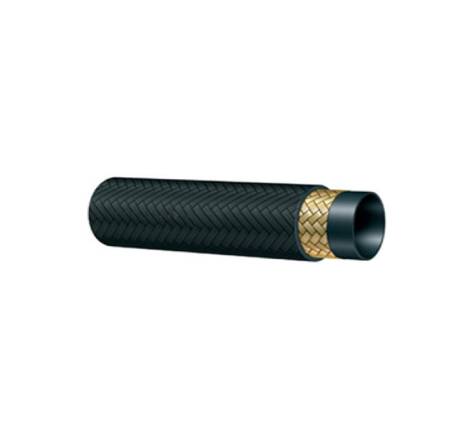The service life of the Hydraulic Hose assembly depends on its usage conditions.The hose assembly in use should be checked regularly for leaks, kinks, blistering, scratches, abrasions or other damages in the outer rubber layer. When the assembly is found to be damaged or worn, it must be replaced immediately.
When selecting and using, the following measures can be taken to extend the service life of the assembly:
1. Installation of the hose assembly: The installation of the hydraulic hose assembly should comply with the relevant standards on the direction and arrangement of the hydraulic hose to ensure that the hose assembly is used correctly.
2. Working pressure: The pressure of the hydraulic system should not exceed the rated working pressure of the hose. The pressure rise or peak value that exceeds the rated working pressure is extremely destructive and must be considered when selecting a hose.
3. The lowest burst pressure: the burst pressure is limited to destructive tests to determine the purpose of the design safety factor.
4. Temperature range: Do not use the Hose under temperature conditions exceeding the recommended limit, including internal and external temperatures. If the hydraulic fluid used contains emulsion or solution, please refer to the relevant technical data separately. Regardless of the operating temperature range of the hose, it must not exceed the maximum operating temperature recommended by the fluid manufacturer.

Hydraulic Hose
5. Fluid compatibility: The inner rubber layer, outer rubber layer, reinforcement layer and hose joints of the hydraulic hose assembly must be compatible with the fluid used. The proper hose must be used because the chemical properties of phosphate-based and petroleum-based hydraulic fluids are completely different. Many hoses are suitable for one or more fluids, but not all fluid types.
6. Minimum bending radius: Do not bend the hose to less than the recommended minimum bending radius, nor subject the hose to tension or torque. This may cause the reinforcement layer to bear excessive stress and greatly reduce the ability of the hose to withstand pressure .
7. Hose size: The inner diameter of the hose must be able to handle the required flow rate. If the inner diameter is too small at a specific flow rate, it will cause excessive fluid pressure and heat generation, causing damage to the inner rubber layer.
8. Hose direction layout: Use pipe clamps when necessary to restrain, protect or guide the hose to minimize the risk of damage due to excessive bending, shaking, or contact with moving parts or corrosives. Determine the appropriate hose length and joint form to prevent wear, avoid contact with sharp objects and distortion, so as to achieve a leak-proof connection.
9. Hose length: When determining the correct hose length, the length change under pressure, machine vibration and movement, and the length of the hose assembly should be considered.
10. Hose application: Choose the appropriate Metal Flexible Hose according to the specific application. Special fluids or high temperature performance are examples of applications that require special consideration for the use of special hoses.
Copyright © Hengshui Huiya New-Mat Technology Co., Ltd. All Rights Reserved Sitemap
